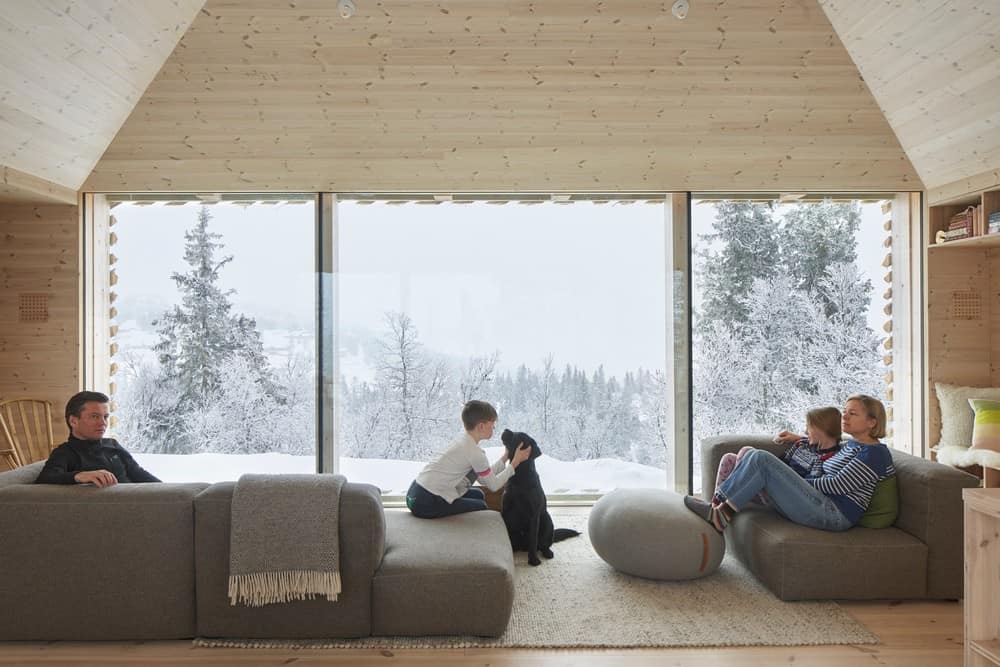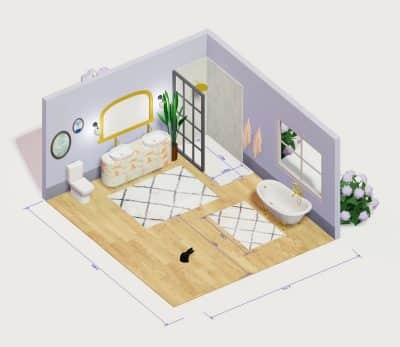
Scandinavian interior design is celebrated worldwide for its blend of simplicity, functionality, and natural beauty. This design philosophy, originating in the Nordic countries of Sweden, Norway, Denmark, and Finland, creates bright, airy spaces that offer both comfort and practicality. Over time, Scandinavian design has evolved to incorporate modern trends while staying true to its foundational principles.
Origins and History
Scandinavian design emerged in the early 20th century, gaining international attention during the 1950s. Influenced by the region’s harsh winters and long periods of darkness, Scandinavian interiors focused on maximizing natural light, warmth, and functionality. The minimalist design approach ensured that every element served a purpose, creating living spaces that were both stylish and practical.
Key Elements of Scandinavian Interior Design
1. Natural Light
Maximizing natural light is a cornerstone of Scandinavian design. Large windows, skylights, and strategically placed mirrors help to fill spaces with as much daylight as possible. Light-colored walls, often white or in neutral tones, further reflect light, creating an open and inviting atmosphere. This focus on brightness is especially crucial in Nordic countries where winters are long and daylight hours are few.
2. Neutral Color Palette
The Scandinavian color palette typically features soft, neutral tones like white, gray, and beige. These shades help to create a calming and serene environment. While pops of color are sometimes added through accents, the overall design remains subtle and understated. Modern Scandinavian interiors have begun incorporating bolder colors such as red or blue, used sparingly to maintain the minimalist aesthetic.
3. Natural Materials
Wood is one of the most important materials in Scandinavian design, particularly light woods like birch, pine, and oak. Wood is used in furniture, flooring, and decorative accents, adding warmth and texture to the space. Other natural materials, such as stone, wool, leather, and linen, are commonly featured to further reinforce the connection to nature. These materials contribute to a cozy, tactile environment that feels both organic and welcoming.
4. Minimalism and Functionality
Scandinavian design is rooted in minimalism. Rooms are designed to be uncluttered, with clean lines and functional furniture. Every item in a Scandinavian home serves a purpose, ensuring that spaces remain efficient and open. Multi-functional furniture, such as storage ottomans or modular shelving, is often used to maximize space without overcrowding the room. This simplicity reflects a commitment to practicality, a hallmark of Scandinavian living.
5. Hygge and Lagom
Two cultural concepts—hygge and lagom—influence Scandinavian design. Hygge, a Danish term, refers to creating a warm, cozy environment where comfort and relaxation are prioritized. Lagom, a Swedish concept, is about finding balance and moderation, advocating for “just enough” rather than excess. These ideas guide the design process, ensuring that spaces are not only aesthetically pleasing but also promote well-being.
6. Sustainability
Sustainability is a core element of Scandinavian design. The emphasis on natural materials extends to the careful selection of eco-friendly products and energy-efficient solutions. Scandinavian designers focus on creating homes that minimize environmental impact, using renewable resources and long-lasting materials. This focus on sustainability aligns with a broader cultural respect for nature and the environment.
Modern Trends in Scandinavian Design
In 2024, Scandinavian interiors are evolving to embrace a few new trends while staying grounded in their minimalist roots:
- Dark Woods: While light woods like birch and pine have traditionally dominated Scandinavian interiors, darker woods such as walnut and teak are becoming popular. These woods add depth and warmth, bringing a rich, sophisticated element to the design.
- Bold Colors: Although neutral tones remain foundational, bold colors like red, blue, and even deep greens are being used as accents. These vibrant hues offer a modern twist on traditional Scandinavian palettes, adding energy without overwhelming the minimalist aesthetic.
- Geometric Patterns: Inspired by 1960s designs, geometric patterns are becoming more prevalent in Scandinavian interiors. Rugs, wall art, and decorative accents with bold, linear patterns are adding visual interest and contrast to otherwise simple designs.
How to Incorporate Scandinavian Design in Your Home
Here’s how you can integrate the principles of Scandinavian design into your living space:
- Maximize Natural Light: Ensure that your home takes advantage of as much natural light as possible. Large windows are ideal, but if that’s not an option, mirrors can help reflect and amplify the light in your space. Keep window treatments simple and sheer, or opt for no curtains at all to maximize brightness.
- Stick to a Neutral Palette: Whites, grays, and light earth tones are the hallmark of Scandinavian interiors. Use these colors on your walls and in large furniture pieces. To avoid a monotonous look, you can add hints of color through smaller decor items like cushions, artwork, or vases. Keep these accents minimal and coordinated to maintain a cohesive look.
- Use Natural Materials: Incorporate wood into your design wherever possible. Wood flooring, wooden furniture, and small wooden decor elements are all great options. Complement these with other natural materials such as wool throws, linen curtains, or leather upholstery to introduce texture and warmth.
- Choose Functional Furniture: Scandinavian furniture is both stylish and functional. Opt for minimalist pieces with clean lines and practical features. Multi-purpose furniture—like a coffee table with storage, or a bench that doubles as a seating and storage unit—is perfect for small spaces. Scandinavian design values efficiency and practicality without sacrificing aesthetics.
- Layer Cozy Textures: Even in a minimalist space, layering different textures adds warmth and comfort. Soft wool blankets, plush cushions, and sheepskin rugs can all bring a cozy feel to your home. These tactile elements also help achieve the hygge factor, making the space more inviting.
- Incorporate Greenery: Adding a few well-chosen plants can breathe life into a Scandinavian-inspired space. Greenery not only enhances the natural feel but also improves air quality and brings a sense of tranquility indoors. Stick to low-maintenance plants that thrive in indoor environments.
- Focus on Sustainability: When selecting furniture, decor, and building materials, prioritize sustainability. Opt for items made from eco-friendly, renewable resources. Invest in long-lasting furniture pieces rather than short-lived trends. This approach will not only help the environment but will also result in a timeless interior that lasts for years.
- Layer Lighting: Lighting plays an essential role in creating the cozy and inviting atmosphere associated with Scandinavian design. Use a combination of lighting sources, including pendant lights, floor lamps, and table lamps. Candles are also a common feature in Scandinavian homes, offering a warm, soft glow perfect for evenings. Choose warm-toned bulbs to enhance the cozy ambiance.
Conclusion
Scandinavian interior design is much more than a trend; it is a philosophy that promotes simplicity, functionality, and sustainability. Its focus on natural light, neutral colors, and eco-friendly materials helps create homes that are both beautiful and practical. Whether you’re drawn to its minimalist roots or the emerging trends of bold colors and dark woods, Scandinavian design offers a versatile and timeless approach to modern living.
By embracing these elements in your home, you can create a peaceful, inviting space that reflects the essence of Scandinavian style while supporting a sustainable and environmentally conscious lifestyle.








